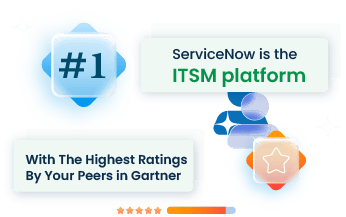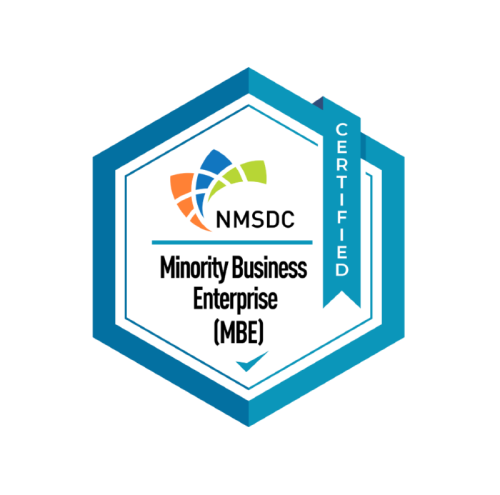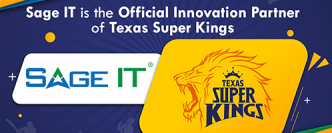“ServiceNow IT Operations Management (ITOM) includes tools designed to improve and automate handling IT infrastructure, applications, and services. ITOM plays a crucial role in modern business operations by providing visibility and control over IT environments, making services reliable, available, and performing at their best. Through automation and integration, ITOM reduces manual efforts and operational overheads, allowing IT teams to focus on strategic tasks.
What is ServiceNow IT Operations Management (ITOM)?
ServiceNow IT Operations Management (ITOM) is a cloud-based platform designed to manage and automate technology operations across an organization. It provides a comprehensive view of all IT infrastructure, including computing, network, hardware, and software resources. ITOM integrates with ServiceNow IT Service Management (ITSM) to shift from reactive to proactive IT operations. Key functions include discovering and mapping IT assets, monitoring performance, managing events, and automating resolution processes. By leveraging AI capabilities, ITOM predicts issues before they occur, ensuring smooth and efficient IT operations.
Difference Between ServiceNow IT Service Management (ITSM) and ServiceNow IT Operations (ITSO)
Knowing the distinction between ServiceNow IT Service Management (ITSM) and IT Operations Management (ITOM) is crucial for optimising your organisation’s IT infrastructure.
ServiceNow IT Service Management (ITSM) focuses on managing and delivering IT services to meet the needs of the business. It’s all about service delivery and customer satisfaction. Think of ITSM as your customer-facing interface. It handles:
- Incident Management: Quickly addressing and resolving service disruptions.
- Problem Management: Identifying root causes of incidents to prevent recurrence.
- Change Management: Managing changes to the IT environment to minimize risk.
- Request Management: Handling service requests from users.
ServiceNow IT Operations Management (ITOM), on the other hand, is about ensuring that the IT infrastructure runs smoothly. It focuses on operational efficiency and system performance. ITOM involves:
- Discovery: Automatically identifying and mapping IT assets and their relationships.
- Service Mapping: Understanding how services are delivered across the infrastructure.
- Event Management: Monitoring and managing events to detect and respond to issues.
- Orchestration: Automating routine tasks to improve efficiency.
- Cloud Management: Managing cloud resources to ensure optimal performance and cost-effectiveness.
While ITSM deals with the front-end service delivery and customer interaction, ITOM takes care of the back-end infrastructure operations. Together, they provide a comprehensive approach to IT management, ensuring both service quality and operational efficiency.
ServiceNow ITOM Features
Discovery
Discovery catalogs every IT asset within an organization. This includes hardware, software, and network components, offering a full view of all technology assets.
With visibility into all assets, organizations can manage and maintain the IT environment more effectively. This reduces blind spots that could lead to potential issues.
Service Mapping
Service mapping visualizes the interconnections and dependencies between IT components. It maps how services and their underlying infrastructure interact.
By understanding these dependencies, it’s easier to pinpoint the root causes of issues and see the impact of changes. This leads to better service management and reduced downtime.
Event Management
Event management monitors, detects, and responds to events affecting IT services. It ensures proactive management of potential issues.
This feature improves service availability by quickly detecting and resolving issues. It minimizes the impact of incidents on end-users.
Orchestration
Orchestration automates IT processes across complex environments. It integrates various systems and automates repetitive tasks.
Automation saves time and reduces errors, allowing IT teams to focus on more strategic tasks rather than routine operations.
Operational Intelligence
Operational Intelligence uses machine learning to analyze performance issues in IT infrastructure and applications. It provides insights into patterns and anomalies that might indicate potential problems.
By identifying issues early, organizations can prevent outages and maintain high performance. This proactive approach leads to more stable and reliable IT operations.
Cloud Management
Cloud management focuses on the use of cloud resources. It includes tools for monitoring, managing, and securing cloud environments.
Proper cloud management ensures optimal usage of resources, cost savings, and improved performance. It also helps in maintaining security and compliance across cloud platforms.
ServiceNow ITOM Implementation
Needs Analysis and Requirement Elicitation
Start by conducting a thorough needs analysis. This phase gathers essential information about your IT environment, existing tools, and specific operational challenges. The next step involves requirement elicitation, focusing on identifying the exact functionalities and customizations necessary to meet your operational goals.
Importance of thorough analysis: Skipping this step can lead to misaligned objectives and overlooked requirements. A detailed needs analysis ensures a tailored implementation, aligning ITOM features with your unique business needs.
Configuration and Customization
Begin with the default configurations of ServiceNow ITOM. This approach helps in understanding the platform’s capabilities before making customizations. Document every change to maintain a clear record of configurations.
Examples of customization: Custom dashboards can display metrics relevant to your organization. Tailor workflows to match your operational processes, ensuring automation supports your specific needs. For example, integrating custom scripts can automate unique operational tasks, improving responsiveness.
Rollout Activities
A phased rollout is crucial. Start with a pilot phase involving a limited number of users to identify any issues early on. Gradually extend the rollout to more users, providing training and support at each stage to ensure smooth adoption.
Risk management: Identify potential risks early. Common risks include user resistance to new tools and outdated automation rules. Mitigation strategies include continuous training sessions, user feedback mechanisms, and regular updates to automation rules to keep them relevant.
Risks
Potential risks
- Low user adoption: Users may resist adopting new ITOM applications, impacting overall success.
- Fading relevance of automation rules: Automation rules might become outdated, reducing their usefulness.
Mitigation strategies
- Low user adoption: Involve users early in the process. Provide thorough training and continuous support to ease the transition.
- Fading relevance of automation rules: Implement a review process for automation rules, ensuring they remain aligned with current operational needs.
Benefits of ServiceNow ITOM: Why Businesses Choose ServiceNow ITOM
Holistic View
ServiceNow ITOM provides a holistic view of your entire IT landscape. This comprehensive visibility spans across physical, virtual, and cloud environments, enabling better management of all IT assets.
With everything in one place, it becomes easier to monitor, manage, and optimize resources. This broad view reduces blind spots, improves decision-making, and enhances the overall efficiency of IT operations.
Predict Issues and Automate Resolution with AI
One of the standout features of ServiceNow ITOM is its ability to predict issues and automate resolutions using AI. By analyzing patterns and historical data, the platform can foresee potential problems before they escalate.
If a server’s performance starts to degrade, ServiceNow ITOM can flag this early, suggesting preemptive actions. Automation then takes over, resolving issues without human intervention, saving time, and reducing the risk of human error. This proactive approach minimizes downtime and keeps your systems running smoothly.
Proactive Firewall Policy Management and Auditing
ServiceNow ITOM ensures proactive firewall policy management and auditing. This feature maintains your security posture by regularly reviewing and updating firewall rules. Automated audits help identify and rectify any discrepancies or vulnerabilities.
This proactive stance not only safeguards your network but also ensures compliance with industry standards and regulations. Regular updates and audits mean your defenses are always up-to-date and robust against threats.
Pre-built and Certified Integrations
With pre-built and certified integrations, ServiceNow ITOM seamlessly connects with a wide range of third-party tools and systems. These integrations are crucial for creating a unified IT environment. Examples include integrations with monitoring tools like Nagios and cloud platforms like AWS and Azure.
These ready-made connectors simplify setup and ensure reliable performance, allowing you to leverage existing tools while benefiting from the advanced capabilities of ServiceNow ITOM.
Speed Cloud Adoption
ServiceNow ITOM accelerates cloud adoption by providing tools that simplify and streamline the process. This includes capabilities for cloud resource management, orchestration, and cost tracking. By managing cloud resources efficiently, businesses can scale operations without the usual complexities.
Key steps for implementing this include assessing current resources, planning the migration, and utilizing ServiceNow’s automation tools to manage and monitor cloud environments seamlessly
High Platform Adoption
ServiceNow ITOM is designed for high adoption across organizations. Its intuitive interface and comprehensive features make it easy for IT teams to integrate and use.
The platform supports various IT operations processes, from monitoring and management to automation and orchestration. This high level of adoption leads to better utilization of IT resources and more efficient operations.
Conclusion
IT Operations Management (ITOM) is undergoing transformation driven by trends like AIOps, which uses artificial intelligence for incident management. Advanced analytics and cloud-native technologies are reshaping ITOM, offering deeper insights and streamlined operations.
Given the benefits of ITOM, businesses should consider partnering with ServiceNow Consulting Services for guidance on implementation. This strategic move can facilitate a seamless transition, optimize IT operations, and drive overall business growth.
By addressing these trends and taking action, organizations can stay ahead in the evolving IT landscape, ensuring robust and efficient operations that support their growth objectives.












